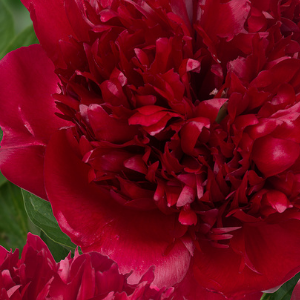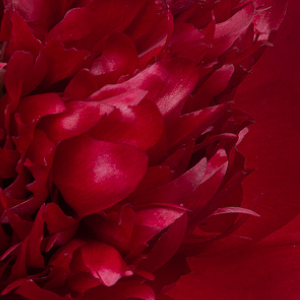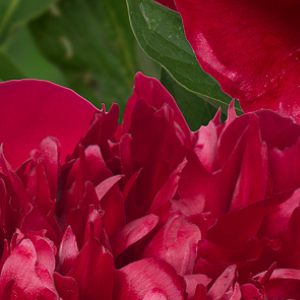What about a bit of red to spice your Spring garden up a bit?
It’s not every day you come across a red as true as the one worn by ‘Red Charm’. Like that Little Red Riding Hood in the dark forest, ‘Red Charm’ stands out in the garden and is very attractive to visitors.
Be they wolf, butterfly or human…
A cross of the well-known P. ‘Rubra Plena’ it was registered by Glasscock in 1944 and became an APS Gold Medal winner in 1956.
And 65 years later it’s still going strong... The wonder of peonies! We can’t gush enough about these plants. They really are our favourite.
‘Red Charm’ is an indulgent, herbaceous perennial that is early flowering and sturdy. It produces lots of deep, ruby red cup-shaped flowers with ruffled centres that keep expanding as the flower opens. The flowers are bomb-shaped and very large, sometimes reaching up to 20cm across. Although it opens a scarlet red colour, as the flower matures it becomes darker and darker ending up a deep plum or purple.
Once established it can reach up to 90cm in height and its bushy growth habit and fine, dark green leaves remain lovely into Autumn. This makes ‘Red Charm’ a great choice if you would like to create a small hedge or need some structure along a pathway. You could also pop it in a flower bed with a mix of other perennials for a striking display.
It’s likely that you will enjoy having this reliable and vigorous beauty in your garden so much that you will come to depend on being dazzled by its beautiful flower and foliage displays year after year.
This exquisite lady in red with its substantial, waxy-textured petals and strong stems makes an excellent, long-lasting cut flower and has a pleasing, subtle fragrance.
If you’d like to add ‘Red Charm’ to your collection, here are some guidelines for planting this herbaceous peony:
- Plant in full sun or part shade in a sheltered position
- Any fertile soil will do, as long as it is free draining
- Plant with the crown (top of the root) no more than 5cm below the ground. With container grown plants, simply plant them at the same level they are in the pot they arrive in
- Don’t bury it with mulch. Peonies like organic matter but don’t mulch over the crown as it might not flower the next Spring
- Once you are ready to plant your peony in the garden, start by digging a hole twice as big as the root ball of the plant and put some organic matter or compost at the bottom of the hole. It is often a good idea to mix some fertiliser (such as our Professional Peony Feed) with the compost
- Place your peony in the centre of the hole, ensuring that the crown is level with or just below the surface level, backfill with compost and soil and firm into place. Water well but don’t over-water; remember that the root will rot if it gets too wet
- Peonies will also be happily planted in a container so you can follow the same process, just make sure you feed your container grown peonies once a year to make sure they have enough nutrients
And there you go!
In this case, red means ‘go’!
Grow peony grow!










